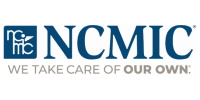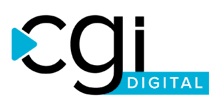Create a campaign and show people how to take their annual posture picture
From text-neck to the computer slump, people know their posture is a problem. It‟s up to you to help them do something about it and create an action plan towards improvement that includes regular chiropractic care. A Posture Month campaign is a great way to build awareness with education and annual posture pictures. Plus, engaged patients will often share their awareness by taking pictures of their friends‟ posture, building your authority as the Posture Expert.
The first step in improving posture is seeing and benchmarking what someone‟s posture looks like. A camera and a regular background create digital documentation so you can make an objective assessment. Hold the camera level with the ground and photograph the subject from the front, back and side. (NOTE: A posture picture is protected health information under HIPAA, so keep pictures digitally secure with a dedicated camera or just download pictures to their EHR).
Grids are great for more precise measurement, but a standard six panel door or anything showing a vertical reference works as a benchmark to compare future images. Have them stand a few inches from the wall or door with what feels like “standing tall good posture.” If they stand rigidly "at attention," tell them to relax (and notice how many people are actually a bit uncertain of what standing tall actually feels like).
People are usually amazed to see their first Posture Picture, which helps them take the first step in becoming Posture Conscious. This awareness and the intentionality of taking a posture picture is the key to teaching patients to take pictures of others. When you review the clinical correlation of their posture and problem, suggest they can take a similar photo of others. Having them download a free posture assessment app (whether or not it‟s the one you use) can be helpful to encourage them to do so, but is not necessary to engage patients to take pictures of those they care about.
A cell phone camera or tablet is an essential tool for any neuro-musculo-skeletal professional. Back pain isn't going away, Boomers are getting older, and posture is an acknowledged marker of general health1. It's not just kids with backpacks or cane-carrying seniors – studies show poor posture is a major cause of back and neck pain for all ages, and over time often contributes to digestive and cardio-pulmonary problems. The good news: there are easy things people can do to strengthen posture, including care to restore spinal health with an adjustment.
Repositioning the pain patient towards an awareness of their postural and motion deficits provides a logical and intuitively true bio-mechanical link between perceived pain and observable motion dysfunction. Restoring lost segmental motion is among the most agreed upon benefits of an adjustment, and often correlates with pain relief. Chiropractors can then empower patients for pain management, rehab and wellness as well as align with the cultural and scientific perceived value of strengthening core stabilizing muscles by adding posture, balance and alignment exercises to their protocols.
In addition to training healthy joints to move in full-range symmetry, strengthening posture can have potential positive effects on psychological and/or emotional issues by improving posture and body consciousness. Also, posture pictures taken during an initial exam set the stage to build posture awareness and support the benefits of care when patients see tangible posture improvements after treatment.
A posture practice can target the opportunity today by building real relationships, regardless of insurance, to help people with the problem they present with, and then build value. The patient's desire to move well, optimize health and avoid a recurrence of their initial complaint becomes the center of a practice model with three elements: Posture Consciousness, Concepts and Control. In other words, build a cycle: connect their problem with posture, create awareness with a digital posture picture and then empower them with StrongPosture® exercises2. Be aware of the benefits of standing taller and moving well.
Dr. Weiniger literally wrote the book on improving posture, Stand Taller ~ Live Longer: An Anti-Aging Strategy, and is managing partner of BodyZone. He's trained thousands of DCs to help their patients move well with the StrongPosture® exercise protocols and promote posture awareness with the free PostureZone iPhone app and online referral directories. Dr Weiniger work on posture has been featured in mainstream media including ABC, NBC and FOX News, Oprah‟s Oxygen network, Scripps, Natural Health, Prevention, Bottom Line and Golf Digest. For professionals his team hosts PostureZone.com for practice tools and PosturePractice.com for training as a CPEP(Certified Posture Exercise Professional).
1 McEvoy MP, Grimmer K. Reliability of upright posture measurements in primary school children. BMC Musculoske-let Disord 2005;29:6-35
2 Stand Taller~Live Longer: An Anti- Aging Strategy, S. Weiniger, BodyZone Press, 2008
Source




